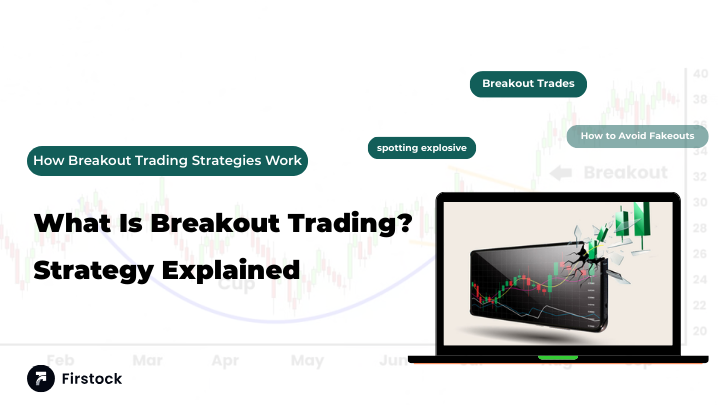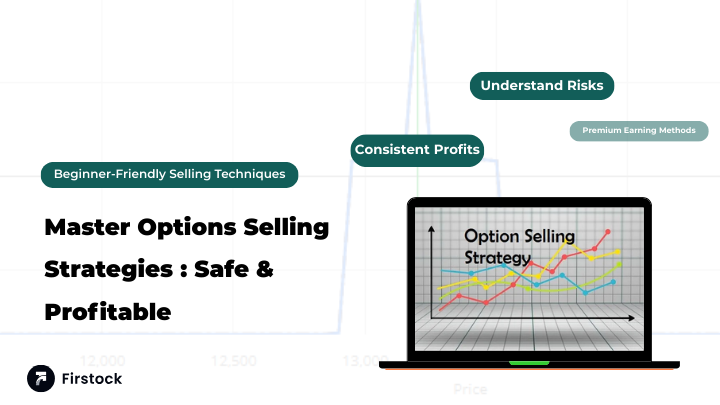Why You Need a Trading Plan in 2025 | Trading Strategy Tips

Here’s why having a trading plan in 2025 is essential for success
In trading, luck might win you a few rounds — but strategy wins the game.
If you bought a stock just because "it looked like it was going up" or sold one out of a sudden panic, then you have already experienced the reason why having a trading plan is not only important but necessary.
The financial markets are changing faster than ever as we move further into 2025. There are algorithmic systems that dominate the order books, prices are affected by global events within seconds, and volatility has become the new normal. In such a situation, trading without a plan is like going through a storm without a compass.
This article will help you grasp the concept of a trading plan, understand why it is a must, figure out how to create one that fits you, and see how the use of technology - for example, algorithmic trading - can help you keep your trading discipline and be more consistent.
What Is a Trading Plan?
Let’s start simple — a trading plan is your personalized set of rules for entering, managing, and exiting trades.
It tells you:
- What markets you’ll trade
- When you’ll enter and exit
- How much you’ll risk
- How you’ll evaluate your success
To put it simply a trading plan is how you operate with consistency. It changes trading from being an emotional impulsive action into a structured, repeatable process.
Imagine the market to be a fast-flowing river and your trading plan is the boat that saves you from being carried away by each wave of news and emotion.
Disclaimer: Trading with a plan is not a guarantee of profits. What it really does is that it lessens bad decisions and ensures that your trading is in line with your goals.
Why Is a Trading Plan So Important?
Here’s what separates a disciplined trader from a hopeful gambler — preparation.
Let’s break down the main reasons why a trading plan matters so much, especially in 2025’s fast, tech-driven markets.
1. Eliminates Emotional Trading
Markets rise and fall every day. Without a plan, traders often chase trends out of excitement or sell in panic during a dip. A plan defines your responses in advance — so your actions are logical, not emotional.
2. Sets Clear Risk Boundaries
You can’t control the market, but you can control your losses. A plan includes a stop loss, which automatically exits a trade when losses hit a certain level. This protects your capital — the number one goal for any trader.
3. Brings Consistency
Consistency is what turns small wins into long-term success. A trader who follows a strategy regularly learns from patterns, improves over time, and avoids random, impulsive decisions.
4. Improves Accountability
A written trading plan helps you track your decisions. When a trade fails, you can review whether it was the strategy or your execution that went wrong — not just blame “the market.”
5. Adapts to Market Changes
Markets evolve, and so should your trading approach. A trading plan helps you identify what needs tweaking — maybe your position size, entry rule, or even your asset class.
Key Components of a Solid Trading Plan
A good plan doesn’t have to be complex. In fact, the best ones are simple, clear, and personalized.
Here’s what every complete trading plan should include:
1. Trading Goals
Define your purpose before you begin. Are you trading to build a secondary income, grow long-term capital, or learn market behavior? Your “why” determines your “how.”
2. Capital and Risk Allocation
Always define how much you’re willing to risk per trade. Many professional traders follow the 1% rule — never risking more than 1% of total capital on a single trade.
For example: If you have ₹2,00,000 in capital, the maximum loss you can take per trade should not exceed ₹2,000.
3. Markets and Instruments
Choose what you’ll trade — equities, futures, or options. Don’t jump between markets without clear logic.
If you’re new, start with one segment like equities before moving to derivatives.
4. Entry and Exit Strategy
This defines your triggers for buying and selling. For example:
- Entry rule: When stock breaks above resistance with volume.
- Exit rule: Stop loss at 2% below entry or RSI crosses below 70.
Your rules should be objective — no “gut feelings.”
5. Stop Loss and Target Setting
Every trade should have a stop loss and a profit target. This ensures you exit automatically when your plan tells you to, rather than reacting emotionally.
6. Trading Journal
Keep a detailed record of every trade — date, entry price, exit price, reason for trade, and outcome. This helps you identify patterns in your behavior and refine your strategy over time.
Trading with a Plan — Not by Chance
Trading without a plan is similar to playing chess without knowing the rules.
A trading strategy refers to a systematic way which you follow regularly. It may be solely based on technical analysis,fundamental research or both.
Some of the commonly known strategies are:
Trend Following: Purchasing the stocks that are going up and selling the ones that are going down.
Breakout Trading: Getting on board when the price is at a major support or resistance line and breaks off.
Swing Trading: Using the medium-term price movements of a few days to hold positions.
Scalping: The very quick and small trades with the intention to take short-term profits.
Disclaimer: None of the strategies in the past can be taken as a guarantee that they will work again in the future. Never use your methods in the real market without proper testing first.
Where Algo Trading Fits Into a Trading Plan
Algorithmic trading (or algo trading) is not any more a privilege of institutional traders, it is the year 2025. Retail traders can now easily and cheaply automate their trading through facilities that are accessible and user-friendly.
Below are some of the ways that algo trading can help your plan:
Emotion-Free Execution: Algorithms are based on preset rules. They don’t panic, overtrade, or hesitate.
Speed: Algorithms can both analyze and perform trades in a matter of milliseconds.
Consistency: The trades are done as per the plan, no doubts, no changes, and no alterations.
Backtesting: With the help of some past data, you can check how the strategy would have worked.
Firstock and similar services provide you with the opportunity to not only facilitate your plan by automating and strategizing, but also by letting you efficiently monitor your results — with no need for coding.
Note: According to the SEBI guidelines, Algo trading is legal in India, however, traders must ensure that they are using the sanctioned brokers and infrastructure.
Example: A Basic Trading Plan
Here’s an example of what a practical trading plan might look like:
This type of plan removes ambiguity. You’ll always know what to do — before the market even opens.
Common Mistakes Traders Make Without a Plan
Even seasoned traders slip into these traps:
- Overtrading: Entering too many positions at once.
- Ignoring Risk: Trading without stop losses.
- Revenge Trading: Trying to recover losses immediately.
- Lack of Discipline: Deviating from the plan out of fear or greed.
- No Record-Keeping: Failing to track what worked and what didn’t.
The result? Inconsistent performance and emotional fatigue. A trading plan eliminates most of these pitfalls by creating structure and accountability.
Building a Trading Plan in 2025
How to Build a Trading Plan That Works for You if You are Just Getting Started: Simple
Step 1: Define Your Timeframe
Why not day trade, swing trade, or invest long-term?
Your time horizon will determine how you recognize the signals and handle the trades.
Step 2: Choose a Strategy
Why not start with one strategy that matches your character?
E.g. if you like less trading and being patient, perhaps swing trading would be more suitable for you than scalping.
Step 3: Test It on Paper
Do a backtest of your strategy before making a real money trade.
Step 4: Start Small
Initially, trade with a small portion of your account.
Your objective should be consistency of the work and not profit maximization.
Step 5: Review and Adjust
Top traders don’t stay the same, they change.
Analyze your trades every week, spot errors and make improvements based on data.
Why Is Trading Important?
Trading plays an essential role in a healthy economy.It provides liquidity, aids price discovery, and offers individuals the chance to participate in wealth creation.
However, it’s equally important to remember that trading is not investing.While investing focuses on long-term growth, trading focuses on shorter-term opportunities.That’s why having a trading plan ensures you operate within your chosen boundaries — without mixing the two mindsets.
Wrapping Up: Trade With Structure, Not Emotion
In 2025, the difference between traders who survive and those who quit isn’t luck — it’s structure.
A trading plan is that structure. Such a strategy offers a step-by-step approach when markets become unstable, helps to control emotions, and makes sure that there is logic behind every trade.
Don't forget that the best strategies can still lose if you lack discipline.
Being consistent, patient, and prepared is what really matters.
So as you step into your next trading session, ask yourself:
“Do I have a plan, or am I reacting?”
If it’s the latter — today’s the best day to fix that.
With reliable tools, analytics, and automated systems offered by Firstock - app for trading in india, creating and executing a disciplined trading plan has never been easier.
Because in trading — planning isn’t optional, it’s survival.
FAQs
1. What is a trading plan?
A trading plan is a personalized framework that defines when and how you trade, how much risk you take, and how you evaluate your results.
2. How to make a trading plan?
Start by defining your goals, risk level, and strategy. Document everything — from entry and exit rules to position sizing.
3. Is trading risky?
Yes. Trading involves significant risk, especially in derivatives. A proper plan helps reduce the impact of those risks.
4. Can I use algo trading to execute my plan?
Absolutely. Algo trading allows automation of predefined rules, ensuring discipline and speed.
5. How do I test my plan before going live?
Use backtesting tools available on platforms like Firstock to simulate your strategy on historical data.
6. How often should I review my trading plan?
Ideally, once a month or after every 20–25 trades. Markets evolve — so should your plan.





